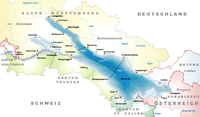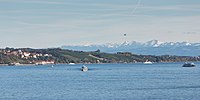High Rhine Railway
| High Rhine Railway (Basel–Konstanz) | |||||||||||||||||||||||||||||||||||||||||||||||||||||||||||||||||||||||||||||||||||||||||||||||||||||||||||||||||||||||||||||||||||||||||||||||||||||||||||||||||||||||||||||||||||||||||||||||||||||||||||||||||||||||||||||||||||||||||||||||||||||||||||||||||||||||||||||||||||||||||||||||||||||||||||||||||||||||||||||||||||||||||||||||||||||||||||||||||||||||||||||||||||||||||||||||||||||||||||||||||||||||||||||||||||||||||||||||||||||||||||||||||||||||||||||||||||||||||||||||||||||||||||||||||||||||
|---|---|---|---|---|---|---|---|---|---|---|---|---|---|---|---|---|---|---|---|---|---|---|---|---|---|---|---|---|---|---|---|---|---|---|---|---|---|---|---|---|---|---|---|---|---|---|---|---|---|---|---|---|---|---|---|---|---|---|---|---|---|---|---|---|---|---|---|---|---|---|---|---|---|---|---|---|---|---|---|---|---|---|---|---|---|---|---|---|---|---|---|---|---|---|---|---|---|---|---|---|---|---|---|---|---|---|---|---|---|---|---|---|---|---|---|---|---|---|---|---|---|---|---|---|---|---|---|---|---|---|---|---|---|---|---|---|---|---|---|---|---|---|---|---|---|---|---|---|---|---|---|---|---|---|---|---|---|---|---|---|---|---|---|---|---|---|---|---|---|---|---|---|---|---|---|---|---|---|---|---|---|---|---|---|---|---|---|---|---|---|---|---|---|---|---|---|---|---|---|---|---|---|---|---|---|---|---|---|---|---|---|---|---|---|---|---|---|---|---|---|---|---|---|---|---|---|---|---|---|---|---|---|---|---|---|---|---|---|---|---|---|---|---|---|---|---|---|---|---|---|---|---|---|---|---|---|---|---|---|---|---|---|---|---|---|---|---|---|---|---|---|---|---|---|---|---|---|---|---|---|---|---|---|---|---|---|---|---|---|---|---|---|---|---|---|---|---|---|---|---|---|---|---|---|---|---|---|---|---|---|---|---|---|---|---|---|---|---|---|---|---|---|---|---|---|---|---|---|---|---|---|---|---|---|---|---|---|---|---|---|---|---|---|---|---|---|---|---|---|---|---|---|---|---|---|---|---|---|---|---|---|---|---|---|---|---|---|---|---|---|---|---|---|---|---|---|---|---|---|---|---|---|---|---|---|---|---|---|---|---|---|---|---|---|---|---|---|---|---|---|---|---|---|---|---|---|---|---|---|---|---|---|---|---|---|---|---|---|---|---|---|---|---|---|---|---|---|---|---|---|---|---|---|---|---|---|---|---|---|---|---|---|---|---|---|---|---|---|---|---|---|---|---|---|---|---|---|---|---|---|---|---|---|---|---|---|---|---|---|---|---|---|---|---|---|---|---|---|---|---|---|---|---|---|---|---|---|---|---|---|---|---|---|---|---|---|---|---|---|---|---|---|---|
 Deutsche Bahn trainset nearLauchringen | |||||||||||||||||||||||||||||||||||||||||||||||||||||||||||||||||||||||||||||||||||||||||||||||||||||||||||||||||||||||||||||||||||||||||||||||||||||||||||||||||||||||||||||||||||||||||||||||||||||||||||||||||||||||||||||||||||||||||||||||||||||||||||||||||||||||||||||||||||||||||||||||||||||||||||||||||||||||||||||||||||||||||||||||||||||||||||||||||||||||||||||||||||||||||||||||||||||||||||||||||||||||||||||||||||||||||||||||||||||||||||||||||||||||||||||||||||||||||||||||||||||||||||||||||||||||
| Overview | |||||||||||||||||||||||||||||||||||||||||||||||||||||||||||||||||||||||||||||||||||||||||||||||||||||||||||||||||||||||||||||||||||||||||||||||||||||||||||||||||||||||||||||||||||||||||||||||||||||||||||||||||||||||||||||||||||||||||||||||||||||||||||||||||||||||||||||||||||||||||||||||||||||||||||||||||||||||||||||||||||||||||||||||||||||||||||||||||||||||||||||||||||||||||||||||||||||||||||||||||||||||||||||||||||||||||||||||||||||||||||||||||||||||||||||||||||||||||||||||||||||||||||||||||||||||
| Native name | Hochrheinbahn | ||||||||||||||||||||||||||||||||||||||||||||||||||||||||||||||||||||||||||||||||||||||||||||||||||||||||||||||||||||||||||||||||||||||||||||||||||||||||||||||||||||||||||||||||||||||||||||||||||||||||||||||||||||||||||||||||||||||||||||||||||||||||||||||||||||||||||||||||||||||||||||||||||||||||||||||||||||||||||||||||||||||||||||||||||||||||||||||||||||||||||||||||||||||||||||||||||||||||||||||||||||||||||||||||||||||||||||||||||||||||||||||||||||||||||||||||||||||||||||||||||||||||||||||||||||||
| Owner | DB Netz | ||||||||||||||||||||||||||||||||||||||||||||||||||||||||||||||||||||||||||||||||||||||||||||||||||||||||||||||||||||||||||||||||||||||||||||||||||||||||||||||||||||||||||||||||||||||||||||||||||||||||||||||||||||||||||||||||||||||||||||||||||||||||||||||||||||||||||||||||||||||||||||||||||||||||||||||||||||||||||||||||||||||||||||||||||||||||||||||||||||||||||||||||||||||||||||||||||||||||||||||||||||||||||||||||||||||||||||||||||||||||||||||||||||||||||||||||||||||||||||||||||||||||||||||||||||||
| Line number |
| ||||||||||||||||||||||||||||||||||||||||||||||||||||||||||||||||||||||||||||||||||||||||||||||||||||||||||||||||||||||||||||||||||||||||||||||||||||||||||||||||||||||||||||||||||||||||||||||||||||||||||||||||||||||||||||||||||||||||||||||||||||||||||||||||||||||||||||||||||||||||||||||||||||||||||||||||||||||||||||||||||||||||||||||||||||||||||||||||||||||||||||||||||||||||||||||||||||||||||||||||||||||||||||||||||||||||||||||||||||||||||||||||||||||||||||||||||||||||||||||||||||||||||||||||||||||
| Locale |
| ||||||||||||||||||||||||||||||||||||||||||||||||||||||||||||||||||||||||||||||||||||||||||||||||||||||||||||||||||||||||||||||||||||||||||||||||||||||||||||||||||||||||||||||||||||||||||||||||||||||||||||||||||||||||||||||||||||||||||||||||||||||||||||||||||||||||||||||||||||||||||||||||||||||||||||||||||||||||||||||||||||||||||||||||||||||||||||||||||||||||||||||||||||||||||||||||||||||||||||||||||||||||||||||||||||||||||||||||||||||||||||||||||||||||||||||||||||||||||||||||||||||||||||||||||||||
| Termini | |||||||||||||||||||||||||||||||||||||||||||||||||||||||||||||||||||||||||||||||||||||||||||||||||||||||||||||||||||||||||||||||||||||||||||||||||||||||||||||||||||||||||||||||||||||||||||||||||||||||||||||||||||||||||||||||||||||||||||||||||||||||||||||||||||||||||||||||||||||||||||||||||||||||||||||||||||||||||||||||||||||||||||||||||||||||||||||||||||||||||||||||||||||||||||||||||||||||||||||||||||||||||||||||||||||||||||||||||||||||||||||||||||||||||||||||||||||||||||||||||||||||||||||||||||||||
| Stations | 45 | ||||||||||||||||||||||||||||||||||||||||||||||||||||||||||||||||||||||||||||||||||||||||||||||||||||||||||||||||||||||||||||||||||||||||||||||||||||||||||||||||||||||||||||||||||||||||||||||||||||||||||||||||||||||||||||||||||||||||||||||||||||||||||||||||||||||||||||||||||||||||||||||||||||||||||||||||||||||||||||||||||||||||||||||||||||||||||||||||||||||||||||||||||||||||||||||||||||||||||||||||||||||||||||||||||||||||||||||||||||||||||||||||||||||||||||||||||||||||||||||||||||||||||||||||||||||
| Service | |||||||||||||||||||||||||||||||||||||||||||||||||||||||||||||||||||||||||||||||||||||||||||||||||||||||||||||||||||||||||||||||||||||||||||||||||||||||||||||||||||||||||||||||||||||||||||||||||||||||||||||||||||||||||||||||||||||||||||||||||||||||||||||||||||||||||||||||||||||||||||||||||||||||||||||||||||||||||||||||||||||||||||||||||||||||||||||||||||||||||||||||||||||||||||||||||||||||||||||||||||||||||||||||||||||||||||||||||||||||||||||||||||||||||||||||||||||||||||||||||||||||||||||||||||||||
| Type | Suburban railway (IRE,RE,S-Bahn) | ||||||||||||||||||||||||||||||||||||||||||||||||||||||||||||||||||||||||||||||||||||||||||||||||||||||||||||||||||||||||||||||||||||||||||||||||||||||||||||||||||||||||||||||||||||||||||||||||||||||||||||||||||||||||||||||||||||||||||||||||||||||||||||||||||||||||||||||||||||||||||||||||||||||||||||||||||||||||||||||||||||||||||||||||||||||||||||||||||||||||||||||||||||||||||||||||||||||||||||||||||||||||||||||||||||||||||||||||||||||||||||||||||||||||||||||||||||||||||||||||||||||||||||||||||||||
| System | |||||||||||||||||||||||||||||||||||||||||||||||||||||||||||||||||||||||||||||||||||||||||||||||||||||||||||||||||||||||||||||||||||||||||||||||||||||||||||||||||||||||||||||||||||||||||||||||||||||||||||||||||||||||||||||||||||||||||||||||||||||||||||||||||||||||||||||||||||||||||||||||||||||||||||||||||||||||||||||||||||||||||||||||||||||||||||||||||||||||||||||||||||||||||||||||||||||||||||||||||||||||||||||||||||||||||||||||||||||||||||||||||||||||||||||||||||||||||||||||||||||||||||||||||||||||
| Route number | 4000 | ||||||||||||||||||||||||||||||||||||||||||||||||||||||||||||||||||||||||||||||||||||||||||||||||||||||||||||||||||||||||||||||||||||||||||||||||||||||||||||||||||||||||||||||||||||||||||||||||||||||||||||||||||||||||||||||||||||||||||||||||||||||||||||||||||||||||||||||||||||||||||||||||||||||||||||||||||||||||||||||||||||||||||||||||||||||||||||||||||||||||||||||||||||||||||||||||||||||||||||||||||||||||||||||||||||||||||||||||||||||||||||||||||||||||||||||||||||||||||||||||||||||||||||||||||||||
| Operator(s) | DB Regio,SBB CFF FFS,SBB GmbH,THURBO | ||||||||||||||||||||||||||||||||||||||||||||||||||||||||||||||||||||||||||||||||||||||||||||||||||||||||||||||||||||||||||||||||||||||||||||||||||||||||||||||||||||||||||||||||||||||||||||||||||||||||||||||||||||||||||||||||||||||||||||||||||||||||||||||||||||||||||||||||||||||||||||||||||||||||||||||||||||||||||||||||||||||||||||||||||||||||||||||||||||||||||||||||||||||||||||||||||||||||||||||||||||||||||||||||||||||||||||||||||||||||||||||||||||||||||||||||||||||||||||||||||||||||||||||||||||||
| Technical | |||||||||||||||||||||||||||||||||||||||||||||||||||||||||||||||||||||||||||||||||||||||||||||||||||||||||||||||||||||||||||||||||||||||||||||||||||||||||||||||||||||||||||||||||||||||||||||||||||||||||||||||||||||||||||||||||||||||||||||||||||||||||||||||||||||||||||||||||||||||||||||||||||||||||||||||||||||||||||||||||||||||||||||||||||||||||||||||||||||||||||||||||||||||||||||||||||||||||||||||||||||||||||||||||||||||||||||||||||||||||||||||||||||||||||||||||||||||||||||||||||||||||||||||||||||||
| Line length | 144.3 km (89.7 mi) | ||||||||||||||||||||||||||||||||||||||||||||||||||||||||||||||||||||||||||||||||||||||||||||||||||||||||||||||||||||||||||||||||||||||||||||||||||||||||||||||||||||||||||||||||||||||||||||||||||||||||||||||||||||||||||||||||||||||||||||||||||||||||||||||||||||||||||||||||||||||||||||||||||||||||||||||||||||||||||||||||||||||||||||||||||||||||||||||||||||||||||||||||||||||||||||||||||||||||||||||||||||||||||||||||||||||||||||||||||||||||||||||||||||||||||||||||||||||||||||||||||||||||||||||||||||||
| Track gauge | 1,435 mm(4 ft8+1⁄2in)standard gauge | ||||||||||||||||||||||||||||||||||||||||||||||||||||||||||||||||||||||||||||||||||||||||||||||||||||||||||||||||||||||||||||||||||||||||||||||||||||||||||||||||||||||||||||||||||||||||||||||||||||||||||||||||||||||||||||||||||||||||||||||||||||||||||||||||||||||||||||||||||||||||||||||||||||||||||||||||||||||||||||||||||||||||||||||||||||||||||||||||||||||||||||||||||||||||||||||||||||||||||||||||||||||||||||||||||||||||||||||||||||||||||||||||||||||||||||||||||||||||||||||||||||||||||||||||||||||
| |||||||||||||||||||||||||||||||||||||||||||||||||||||||||||||||||||||||||||||||||||||||||||||||||||||||||||||||||||||||||||||||||||||||||||||||||||||||||||||||||||||||||||||||||||||||||||||||||||||||||||||||||||||||||||||||||||||||||||||||||||||||||||||||||||||||||||||||||||||||||||||||||||||||||||||||||||||||||||||||||||||||||||||||||||||||||||||||||||||||||||||||||||||||||||||||||||||||||||||||||||||||||||||||||||||||||||||||||||||||||||||||||||||||||||||||||||||||||||||||||||||||||||||||||||||||
TheHigh Rhine Railway(German:Hochrheinbahn) is aDeutsche Bahnrailway line fromBasel Badischer Bahnhofin thecity of BaseltoKonstanzonLake Constance.It was built by theGrand Duchy of Baden State Railwaysas part of theBaden Mainline,which follows theRhineupstream fromMannheim Hauptbahnhofto Konstanz. The line derives its name from theHigh Rhine(Hochrhein), which it follows between Basel and Waldshut and on a short section in Schaffhausen.
The line crosses theGermany–Switzerland borderthree times and passes throughSwiss territorywithin thecanton of Basel-Stadtand whilst crossing the main part of thecanton of Schaffhausen.The other sections of the line run through theGerman stateofBaden-Württemberg.Schaffhausenstation is jointly owned and run by Deutsche Bahn (DB) andSwiss Federal Railways(SBB), while the rest of the line is owned and operated throughout by DB.
History[edit]
The High Rhine Railway was opened on 4 February 1856 fromBasel Bad BftoBad Säckingenand extended toWaldshuton 30 October 1856. Construction then stopped for a while, but on 15 June 1863, the whole line to Konstanz (Constance) was completed. Meanwhile, theTurgi–Koblenz–Waldshut railwaywas opened on 18 August 1859, connecting to the Swiss railway network across theRhineatKoblenz.On 1 July 1871, theSwiss Northeastern Railway(NOB) opened theLake Linesection betweenRomanshornand Konstanz. On 17 July 1875, theSwiss National Railway(SNB) opened theWinterthur–Etzwilen railway,Etzwilen–Konstanz/Kreuzlingen Hafen railwayandEtzwilen–Singen railwaylines, which connect to the High Rhine railway line in Konstanz andSingen,respectively.
The whole line — including the sections on Swiss territory — was owned under treaty by Baden State Railways and still belongs toDeutsche Bahn.The 1852 treaty allows Switzerland to reclaim ownership of the section on Swiss territory on five year's notice. Although this possibility was discussed after theFirst World War,it was never implemented. In theSecond World War,cross-border traffic was severely limited and military traffic did not pass through Switzerland. In 1944/45, four pairs of passenger services each day ran all the way between Basel Bad Bf and Singen. In the timetable, however, it was expressly stated: "transit through thecanton of Schaffhausenonly permitted with passport with exemption (visa) ". Between 8 June 1945 and 1 August 1953 the German railway infrastructure in Switzerland was managed by a trust authority established by the Swiss Federal Council.
Between 1873 and 1899,train ferriesoperated from Konstanz over Lake Constance to ports in Germany and Austria.
Route[edit]
The railway follows theHigh Rhineupstream betweenBaselandWaldshut.It crosses theGermany-Switzerland borderfor the first time between Basel andGrenzach-Wyhlen.East of Waldshut, the tracks divert from the river and run in northeastward direction towards Klettgau valley. It crosses the German-Swiss border betweenErzingenandTrasadingen.The highest elevation is reached nearBeringerfeld.At the eastern end of Klettgau valley, the line runs through Engi, a narrow valley betweenBeringenandNeuhausen.Between Neuhausen andSchaffhausen,the line approaches the High Rhine and follows it for a short distance before turning northwards just south ofSchaffhausenstation, again diverting from the river. The line then runs in northeastward direction and crosses the Swiss-German border betweenThayngenandBietingen.Passing through theHegauregion, the line turns southeastwards east of Singen. It runs along the western shore of theBodanrückpeninsula, along theGnadenseepart ofLower Lake Constance.Shortly before reaching Konstanz, its eastern terminus, the line crosses theSeerheinover theOld Rhine Bridge.
The scenic route along the river includes towns with historictown centers,such asRheinfelden,Laufenburg,Waldshut, Schaffhausen,Radolfzelland Konstanz. TheRhine Falls(Rheinfall) can also be seen on route.
Infrastructure[edit]
Since 1987, most of the route has beendouble-tracked;only the section betweenWaldshutandErzingenand a very short section in Konstanz, betweenKonstanz-Petershausenand Kostanz station, issingle tracked.The section betweenLaufenburgandMurgwas duplicated a few years ago.[when?]
The line is 143 kilometres (89 mi) long and standard gauge. As of 2024, the line betweenBasel Bad Bfand Erzingen is notelectrified,whilst the rest of the line (between Erzingen and Constance) is electrified at15 kV 16.7 Hz ACsupplied byoverhead line.The state of Baden-Württemberg and the canton of Schaffhausen have been asked to fund electrification of the part of the route between Basel Badischer Bahnhof and Schaffhausen. In 2013, the section between Erzingen and Schaffhausen was electrified. There are plans to electrify the entire line in the near future.[2]
Operations[edit]


Up to the 1990s, express services ran fromBasel Bad Bf,orFreiburg,toLindau-Insel,with some continuing toMünchen Hbf.As of the December 2023 timetable change,[update]the route is served byInterregio-Express(IRE) trains,IRE 3,on the Basel Bad Bf–Singen and Basel Bad Bf–Friedrichshafen Hafen(previously untilUlm Hauptbahnhof) routes. ARegionalbahn(RB),RB30,[3]runs hourly between Basel Bad Bf andWaldshut,with most trains continuing toLauchringen.During peak hour, services between Basel and Waldshut run every half-hour.DMUsare used on this section. At Basel Bad Bf, connections exist to theS6toZell (Wiesental)andBasel SBB,RB 27toKarlsruhe HauptbahnhofandRB 35toOffenburg.Most of these regional services are part of the tri-nationalBasel S-Bahn.
The section between Waldshut and Lauchringen is used by theRB 37,which continues northwards to Weizen/Stühlingen on theWutach Valley Railwayline. TheS27ofAargau S-BahnandS36ofZürich S-Bahnuse a short section of the line east of Waldshut before crossing the Rhine on theTurgi–Koblenz–Waldshut railwayline.
Since 2013,EMUsofTHURBOoperate asS64ofSchaffhausen S-Bahnbetween Erzingen and Schaffhausen. Between Schaffhausen andSingen (Hohentwiel),more than one train an hour operate during the day. This section is operated by theS62of Schaffhausen S-Bahn andS24ofZürich S-Bahn(until 2015 by theS22service) in addition toInterCity(IC) trains,IC 87,running betweenZürich HBandStuttgart Hbf.EMUs are used on this section since its electrification in 1989. In Schaffhausen. the line connects with theRheinfall Railwayline (linking it with theEglisau–Neuhausen railwayline) and theLake Line.
Between Singen and Konstanz,Regional-Express(RE) serviceRE 2and SBB GmbH'sSeehas(S6) operate. In Singen, they continue northwards on theBlack Forest Railway.In Singen, the line also connects with theEtzwilen–Singen railwayline, which is aheritage railwaysince 2007. Between 1913 and 1966, it also connected with the now dismantledRanden Railway(Randenbahn) to Beuren-Büßlingen. InRadolfzell,the line connects with theRadolfzell–Mengen railwayline, which links it with theStahringen–Friedrichshafen railwayline.
Konstanzstation is close to theGermany–Switzerland border.Towards South, the line merges with the Lake Line (with branches in both directions). Fom Konstanz station, there are connections to theS14andS44ofSt. Gallen S-Bahn,aRegioExpress(RE),RE1,as well asInterRegio(IR) trains of Swiss Federal Railways.
The section between Waldshut and Basel is mainly used by commuters in the industrial conurbation of Basel. The section of the line in the canton of Schaffhausen, Switzerland, and adjacent German towns has its own services operated by theSwiss Federal Railways' subsidiariesSBB GmbHandTHURBO(in addition to theS24). The section between Schaffhausen and Singen, which connects theGäubahnand the Swiss rail network and carries significant long-distance passenger and freight traffic. On the section between Singen and Konstanz, local services operate as part ofBodensee S-Bahn,while IRE services connect withKarlsruhe.

Notes[edit]
- ^Eisenbahnatlas Deutschland (German railway atlas)(10 ed.). Schweers + Wall. 2017. pp. 101, 110–12.ISBN978-3-89494-146-8.
- ^"Die Hochrheinbahn [The High Rhine Railway]"(in German).Retrieved10 March2024.
- ^"On the go in northwestern Switzerland with Tri-national S-Bahn Basel".Bern, Switzerland:SBB CFF FFS.Retrieved14 April2017.
References[edit]
- Gerber, Rainer (1981).125 Jahre Basel-Waldshut: Jubiläum der Eisenbahn am Hochrhein, 1981(in German). Freiburg: Eisenbahn-Kurier Verlag.
- Scharf, Hans Wolfgang (1993).Die Eisenbahn am Hochrhein (Series: Südwestdeutsche Eisenbahngeschichte)(in German). Vol. 1: Von Basel zum Bodensee 1840–1939. Freiburg: Eisenbahn-Kurier Verlag.
- Scharf, Hans Wolfgang (1993).Die Eisenbahn am Hochrhein (Series: Südwestdeutsche Eisenbahngeschichte)(in German). Vol. 2: Von Basel zum Bodensee 1939–1992. Freiburg: Eisenbahn-Kurier Verlag.



